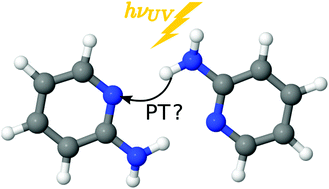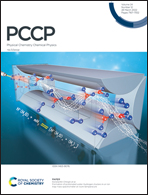Excited-state proton transfer in a 2-aminopyridine dimer: a surface hopping study
Abstract
We present a theoretical investigation of the excited-state intermolecular proton transfer process in a 2-aminopyridine dimer. Previous experimental and theoretical studies on this doubly hydrogen bonded system have attributed an ultrafast 50 fs timescale to the process at low excitation wavelengths and have shown that it involves access to the charge transfer (CT) states of the dimer. We have carried out a trajectory-based surface hopping study of the proton transfer process. To this end, we have further studied the key intersections between locally excited (LE) and CT states that facilitate the proton transfer as well as the eventual ground state return at the XMS-CASPT2 level of theory. The dynamical simulations to investigate the charge transfer-driven event are performed at both the XMS-CASPT2 and TDDFT levels of theory. Trajectories are initiated from the excited states that are either already of CT character or become so upon a short extension of the NH bond. This kind of dynamics is found to be ultrafast with a timescale of about 100 fs, where the dimer rapidly accesses the LE/CT intersection regions en route to single proton transfer. After the transfer, some trajectories are also able to reach the ground state as well through a non-adiabatic transition. In contrast, trajectories that are initiated on an LE state remain on states of that character and do not show proton transfer. However, additionally providing 3 or 4 quanta of initial excitation to the NH stretch was found to promote CT state-driven proton transfer in the dimer.



 Please wait while we load your content...
Please wait while we load your content...